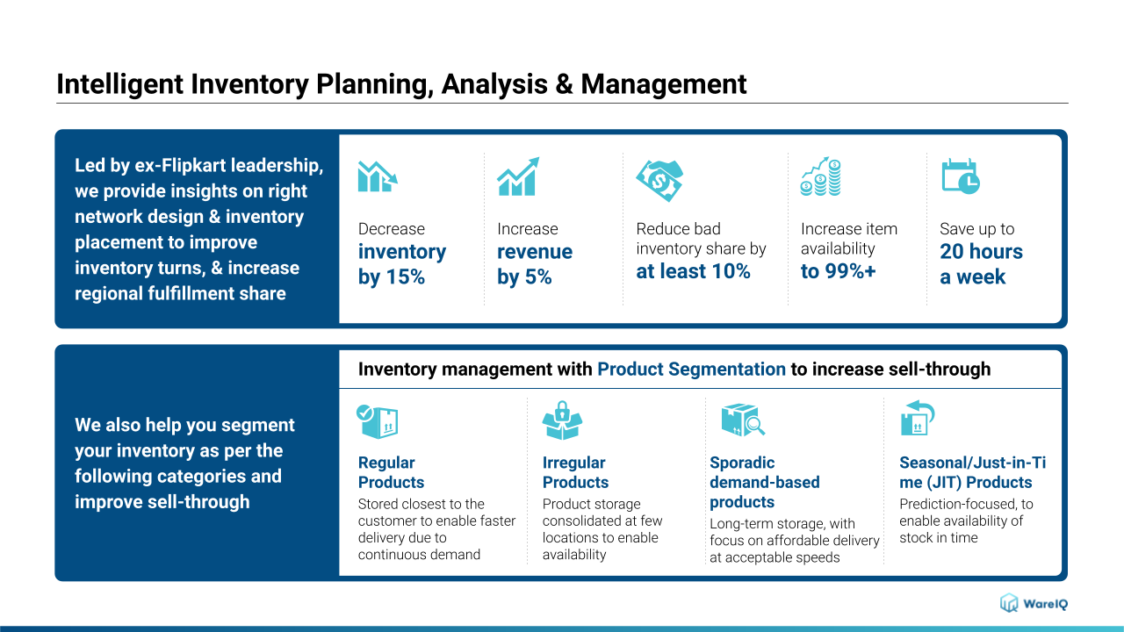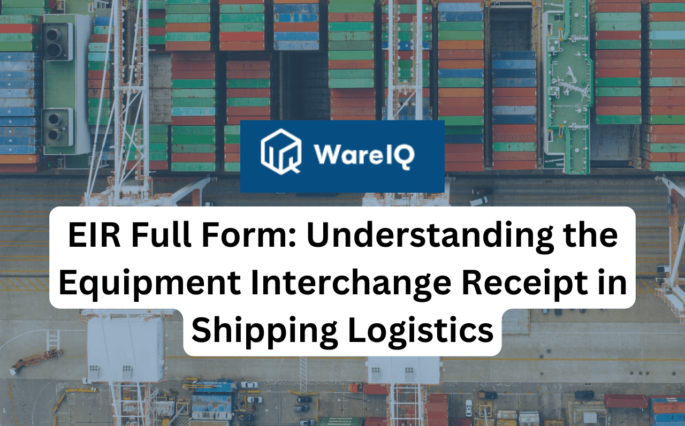What is Decoupling Inventory? Definition, Methods, Differences and Effect on the Supply Chain in 2025

Inventory is a basic asset of any business operation, so inventory management becomes an essential task. Inventory management includes more than just arranging the items on shelves, picking them up when an order comes in and delivering it to the customer. It also comes with a lot of uncertainties.
These uncertainties are part of operating a business and managing them by taking the appropriate steps is a sign of efficient business skills. Events such as the global pandemic and supply chain disruptions caused due to the war in Ukraine have highlighted many challenges and lack of inventory is one of them. Depending on the nature of a business, there could be a shortage of semiconductors, edible oil, medicines, etc. So to maintain functional production and supply operations, forecasting needs to occur. Decoupling inventory is one part of it and it needs to be implemented to prevent stock-out situations and grinding operations to a halt.
- What is Decoupling Inventory?
- How Can You Achieve Decoupling Inventory?
- Advantages of Decoupling Inventory
- Decoupling Inventory vs Pipeline Inventory
- How Does Decoupling Inventory Affect the Supply Chain?
- 3 Different Methods to Avoid Stockouts
- Conclusion: How Can WareIQ Help in Decoupling Inventory?
- Decoupling Inventory: FAQs
What is Decoupling Inventory?
Decoupling inventory, also known as decoupling stock, is the process of separating extra inventory within a production process to ensure smoothness in every operation. Buffer inventory is stored in order to prevent one step of production from causing delays in other steps.
Manufacturers need to ensure that if any of the machines involved in production breaks down or slows down production rate at any point, production does not get affected.
An Example of Decoupling Inventory
For different purposes, the relevant decoupling inventory example can vary depending on the situation. One example for a manufacturing unit is as follows:
If a manufacturer makes bread and biscuits that require the use of flour, they must purchase a huge amount of wheat to grind it into flour. For processes such as grinding, backing, kneading and cutting, various machines are put into use. If any of the machines get damaged or stop working due to an issue, the entire production process can get delayed. In order to mitigate this, the manufacturer can use the principle of decoupling inventory to keep extra flour if the grinding machine fails, keep some buffer knead to cut it and shape it for future steps.
If the kneading machine fails then there should be another way to knead it, bake it or use the flour to make something else from the items in the product line that the company offers. This is a good decoupling inventory example that other businesses can emulate in order to prevent a delay in multiple other processes, just because one operation isn’t going to plan.
WareIQ, an eCommerce fulfillment company, empowers online brands with a superior-tech platform to compete with Amazon like service levels by bringing their average delivery timelines from 5-10 days to 1-2 days.
How Can You Achieve Decoupling Inventory?
Most online retailers will keep extra stock to ensure that client orders are fulfilled on time. Many times, the order frequency gets too high. For example, if the monsoon arrives early, umbrella sellers will get more orders and may struggle to fulfill them.
If you sell a product on your website and multiple other sales channels that needs to be a handmade item or requires assembly, it will benefit you to learn about how decoupling inventory can help you optimize your processes.
Here is a step-by-step guide to completely comprehend how decoupling inventory works:
- Calculate your sales and production capacity.
- Determine the current raw material or work-in-progress inventory levels at each decoupling point in your manufacturing line.
- Analyze previous order data and patterns to forecast demand strategically.
- Determine the amount of extra raw materials you can keep on hand after demand has been met.
- Establish a predetermined inventory replenishment strategy based on the average delivery deadlines for each material after you know the quantity of raw materials to have on hand.
- Maintain accurate inventory records and historical order trends for each SKU and adjust your decoupling inventory purchase orders as needed.
Keep in mind that your decoupling inventory replenishment approach will need to be tweaked over time. Decoupling inventory will not only require additional space in your warehouse but also you will have to dedicate resources towards holding and securing it. So the holding cost limit that you have set should not be surpassed. Always keep an eye on your holding expenses and avoid building up too much surplus inventory, especially if your raw materials have expiration dates or are prone to becoming obsolete.
Advantages of Decoupling Inventory
Maintains Buffer Stock for Repairs and Maintenance
Decoupling inventory is particularly advantageous in the event of a facility outage for repairs or machine maintenance.
Manufacturers can still fulfill orders on time despite any failure of equipment failure if they have adequate decoupling inventory on hand at every step of production. This enables them to use this inventory as a substitute to bypass the failure and enable normal production speed and efficiency.
Provides Protection During Periods of Uncertainty
When manufacturers are unable to obtain sufficient raw materials to finish producing a product, the work-in-progress manufacturing line slows or stops completely.
Decoupled inventory is stored at each level of the production line to offer protection against any uncertainties that could occur and constructs a resilient failure-proof supply chain. This means that no matter which stage of the manufacturing process a product is in, there should be enough raw materials on hand to continue production without any delays.
This is especially useful for companies that make a lot of goods with similar parts or ingredients.
Helps to Avoid Stock Outs
Decoupling inventory is a strategy for ensuring on-time retail fulfillment, particularly if the items you offer require machinery or assembly to fulfill a customer order.
When you sell finished products through dropshipping or direct fulfillment that is done by the manufacturer, you do not have control over the manufacturing process. There are, nevertheless, measures to ensure that demand is met despite production delays.
To reduce the risk of inventory shortages, partnering with manufacturers or suppliers can be a good option. However, this isn’t the only technique to avoid bottlenecks in your supply chain. You can forecast demand and keep safety stock with you at all times to offset the chances of a shortage in inventory or raw materials.
Decoupling Inventory vs Pipeline Inventory
Though they have some similarities in terms of advantages, they are not used in the same way. Decoupling inventory and pipeline inventory both aid supply chain efficiency, with the primary purpose of both being to avoid wastage of time and reduced productivity.
| Particulars | Decoupling Inventory | Pipeline Inventory |
|---|---|---|
| Meaning | Decoupling inventory is material (mostly work-in-progress and semi finished items) that have been held aside in the case of a manufacturing slowdowns or stoppages. Decoupling inventory protects the company's inventory from any production line difficulties. When one portion of the manufacturing line runs at a different speed than another, it might cause problems. When this happens, productivity gets hindered and products remain unfinished, which reduces the renewal rate of inventory stocks. If there is reserved inventory held aside at every level of the manufacturing line in case there is a supply deficit of what's needed to make a sellable, finished product, the inventory is considered as decoupled. | Pipeline inventory refers to items in transit that have not yet arrived at their final destination. If the seller/manufacturer has not yet paid for the items, they are still considered part of the shipper's inventory while they are in transit. Even if the receiver has not taken physical ownership of the products, when the recipient pays for them, the pipeline inventory is added to the recipient's inventory list in a similar way to COD items. |
| How it Works | The same example of the mobile phone shipments can be used in a different scenario where the manufacturing process can require the assembly of several sensitive parts, including everything from the screen, motherboard, mobile chip, etc. When any of the required items get affected and do not reach the manufacturing facility, the entire production-line may come to a standstill. In these cases, decoupling inventory allows the firm to ship its mobile phones on schedule while the hindrances are resolved. | When it comes to international shipments, pipeline inventory can stay in transit for days or even weeks. For example, a shipment of mobile phones made in China could take several days to arrive in India via cargo container. If the wholesaler has already paid for the mobiles, they will be counted as the wholesaler's inventory until they are sold to his retail customers. When a retailer buys the phones from the wholesaler, the pipeline inventory is recorded in their books. |
| Fundamentals | Decoupling inventory refers to what is already on hand. In a favorable condition, a manufacturer or retailer gravitates towards decoupling inventory instead of pipeline inventory because stock shortages can have a dire impact on operations and productivity. | Pipeline inventory relates to what has been ordered but not yet received and hence cannot be used. |
How Does Decoupling Inventory Affect the Supply Chain?
Decoupling inventory operates alongside the material flow as well as the informational flow pipelines in the supply chain. Without decoupling points, a supplier error or downtime might have a negative impact on the demand and supply of products.
Decoupling, for the most part, works inside the supply chain by emphasizing the prevention of time waste or downtime in relation to productivity. The use of manufacturing automation to streamline the production process is emphasized by these decoupling points. Manufacturing automation includes several features that make production more efficient such as order management, parts tracking, outlined/identified production stages, inventory management, etc.
In case of a lack of ability to decouple inventory, production can get lower and then it can affect the following aspects of the supply chain:
Impacts Dropshipping
Some retailers opt for the manufacturer to fulfill orders to customers directly. In this case, sellers only focus on confirming orders on their website or other selling platforms. If decoupling inventory is not done properly and there are hindrances in the production process, manufacturers may be unable to fulfill orders due to various issues which will result in unhappy customers and negative feedback for the business.
Affects the Purchasing of Inventory
Many types of small and medium-sized eCommerce sellers purchase a minimum order quantity (MOQ) and economic order quantity (EOQ). If a manufacturer has low amounts of inventory in stock, there are fewer chances for the seller to get enough inventory to fulfill orders in a timely manner. Thus, the seller will have to settle with what the manufacturer has and is quoting, which may be much more expensive than ordering on the basis of MOQ and EOQ.
Increases Freight Rate
In case there is a stock shortage and sellers have to fulfill multiple orders, they will have to opt to obtain the goods from other warehouses which may be located in other regions, in order to not keep customers waiting. This process can work out to be much more expensive as sellers will have to incur extra freight charges to transport the commodities from those warehouses and can also result in delays as products are not being shipped from a warehouse that is in close proximity to the customer.
Hinders Seasonal Sales
When there is an uncertainty of inventory due to a lack of decoupling inventory, a seller cannot run flash sales or fulfill demand during a season sale which will ultimately lower the profit and cash flow and remove a seller’s ability to get rid of obsolete or low-demand inventory.
Lowers Sales Velocity
A higher sales velocity is always beneficial for a seller. They are often ready to compromise on profit margins to focus on selling more products because that is the way to generate high revenue and increase profit margins. However, if there is a shortage of inventory or other issues in the supply chain, sellers are often unable to achieve the desired sales velocity because they do not have the means to do so.
3 Different Methods to Avoid Stockouts
Automate Order Placement
If you are an eCommerce seller, technology plays a huge role in your business. The Internet of Things(IoT) is one of them. If you apply IoT for not only selling and tracking goods but also for procurement of inventory that you will be selling in the future, you can avoid any errors or miscalculations that could occur if it is done manually. This helps you to generate the data for future orders and optimizes your inventory.
Through the use of technology, multiple facets of the business can be automated such as order placement, inventory management and order fulfillment. This will help increase the speed and accuracy of these processes.
Keep Buffer Stock Handy
Online retailers can utilize safety stock to determine how much extra inventory they can afford to have on hand in case of an emergency or supply chain failure that could cause a delay in order fulfillment, similar to how decoupling inventory works.
The amount of safety stock you’ll need is calculated using the following formula:
Safety Stock = (Maximum Lead Time x Maximum Daily Usage) – (Average Daily Usage x Average Lead Time)
However, keeping too much buffer stock can also lead to obsolescence and further expenses so it is best to calculate this accurately.
Use a Warehouse Management System
It is possible to strategically estimate future demand by collecting and evaluating precise past supply chain data.
Though no forecast is 100% accurate, thanks to the rise and accessibility of digital supply chain technologies, forecasting demand is becoming easier to manage, allowing online retailers to make better judgments about inventory levels.
Investing in technology that delivers real-time supply chain analytics and inventory forecasting insights will help you ensure that you have enough inventory throughout your supply chain to fulfill demand.
A centralized warehouse management system (WMS) such as the one used in WareIQ’s logistics network, collects and records real-time inventory data which helps in inventory planning and management.
Conclusion: How Can WareIQ Help in Decoupling Inventory?
Inventory Management Solutions provided by WareIQ will help you track inventory in real-time and provide insights to assist you to improve stock availability. Its inventory management apps for eCommerce businesses allow you to create automated reorder point notifications based on prior inventory performance at the SKU level, so you’ll know when you’re running low on stock.

WareIQ is a trusted and tested technology platform that gives you all the inventory details you need and lists all the variations in a single dashboard. Experts control every aspect of inventory management.
You get the data and insights you need with WareIQ to gain control over the movement of inventory, lower carrying costs and ensure you always have enough inventory on hand to fulfill demand. Our intelligent method of inventory management ensures balanced inventory in multiple locations according to the order traffic and proximity to customers.








